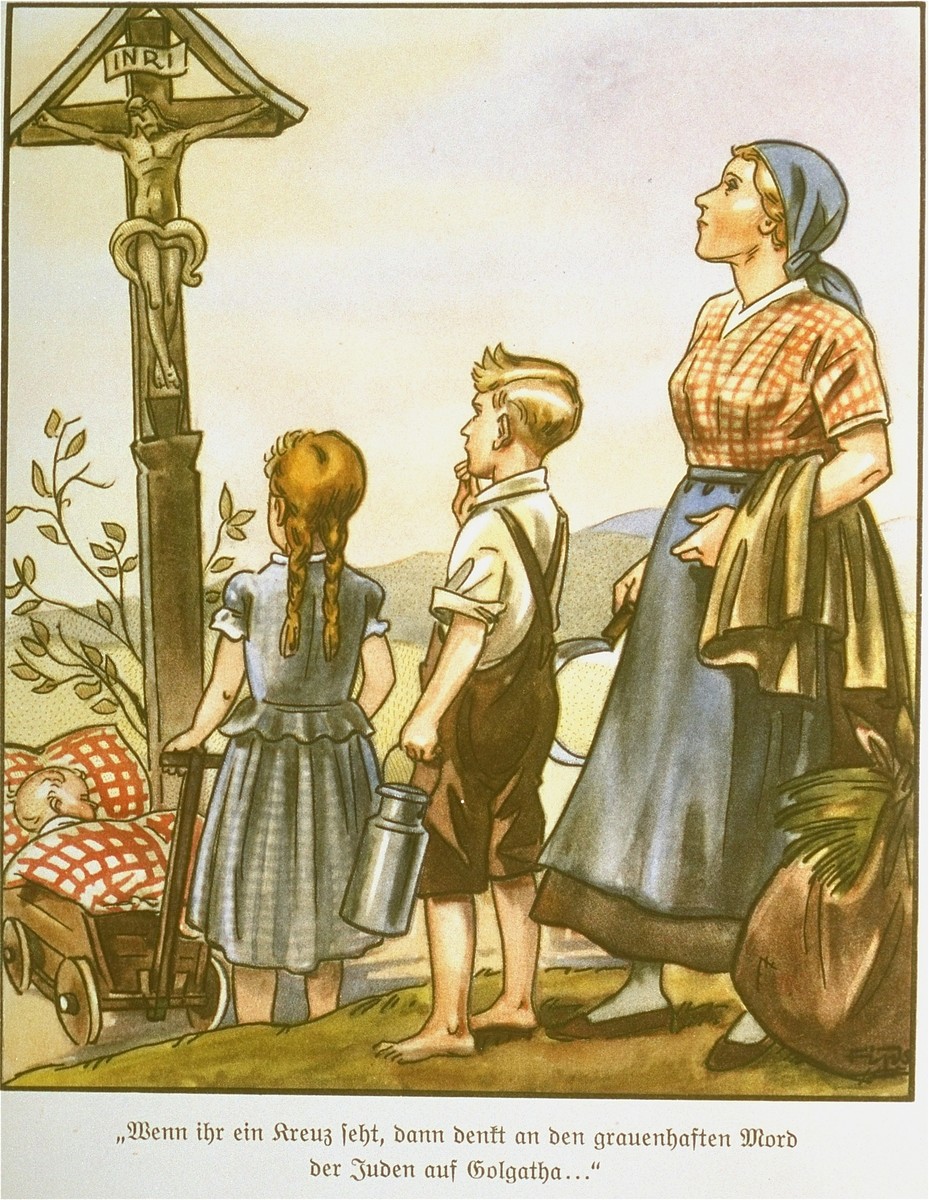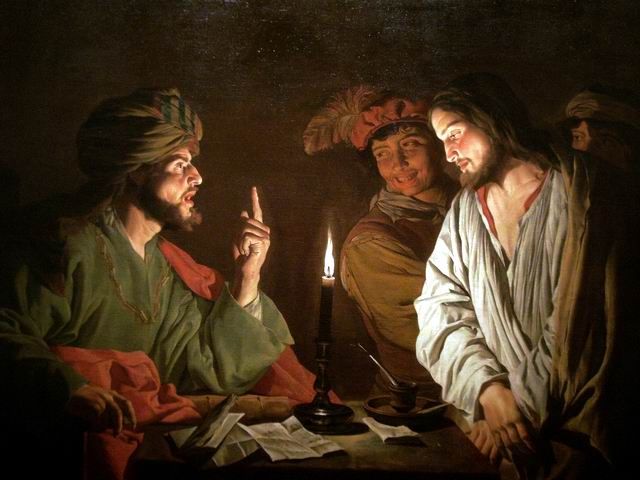Two scholars at a local Catholic university have filmed a video on presenting Jesus’ passion without collectively blaming all Jews for Christ’s death.
In “The Jewish Crowd, Pilate, and Guilt: ‘His blood be on us and our children,’” Professors Philip Cunningham and Adam Gregerman of the Institute for Jewish-Catholic Relations (IJCR) at Saint Joseph’s University (SJU) discuss what Gregerman called “a difficult and painful issue.”
The two are joined by Victoria Barnett, retired director of programs on ethics, religion and the Holocaust at the United States Holocaust Memorial Museum in Washington, D.C.
[hotblock]
The video is one of four produced by the Christian Scholars Group on Christian-Jewish Relations, which has been in existence since 1969 and in whose study sessions Cunningham and Gregerman participate. The project was prepared in collaboration with the Council of Centers on Jewish-Christian Relations, the U. S. member organization of the International Council of Christians and Jews (ICCJ).
Featuring a number of experts, the series, which includes discussion questions, is designed to explore the Passion narratives “in fresh ways that repudiate anti-Jewish biases and illuminate the Gospel message,” according to the ICCJ website.
That task, which the ICCJ calls “a sacred obligation,” has profound consequences, said Barnett, Cunningham and Gregerman.
“Much of Jewish life for centuries in Christendom was viewed through this lens, this notion of inherited guilt, this sinfulness,” said Gregerman. “And the effect of that was to justify hostility and sometimes violence.”
Specific verses from Scripture — such as Matthew 27:25, in which the crowd tells Pilate “(Jesus’) blood be upon us and upon our children” – have been “weaponized against Jews,” said Barnett.
(Watch “The Jewish Crowd, Pilate, and Guilt” on YouTube.)
Such “blood-curse theology,” which held all Jews throughout all time as guilty for Christ’s death, “took on an explicitly racist character in the modern era,” said Barnett.
She pointed to a “horrific example” found in “Der Giftpilz” (“The Poisonous Mushroom”), a 1935 anti-Jewish children’s book. One illustration depicts a German mother and her children contemplating a crucifix with the caption, “Children, when you see a crucifix, think about the horrible murder that the Jews perpetrated in Golgotha” (“Wenn ihr ein Kreuz seht, dann denkt an den grauenhaften Mord der Juden auf Golgotha”).

A page from the 1935 anti-Jewish children’s book “Der Giftpilz” (“The Poisonous Mushroom”) depicts a woman encouraging her children to view all Jews as responsible for Christ’s crucifixion. (United States Holocaust Memorial Museum)
“There were … Christian theologians who argued that not even baptism could remove God’s curse from the Jews,” Barnett said. “There were even church leaders during the Holocaust who explained and justified the genocide of the European Jews by referring to (Matthew 27:25).”
Two decades after six million Jews were systematically slain by the Nazi regime during World War II, the Second Vatican Council declared “what happened in (Christ’s) passion cannot be charged against all the Jews, without distinction, then alive, nor against the Jews of today. … The Jews should not be presented as rejected or accursed by God, as if this followed from the holy Scriptures” (Nostra Aetate, 4).
A closer look at the Passion Scriptures in their full historical context (a method called for by Pope Pius XII in his 1943 encyclical Divino Afflante Spiritu) is essential, said Cunningham — as is a recognition that “Jesus lived and died (as) a Jew.”
The text of Matthew’s Gospel was likely written “in the 80s or 90s of the first century,” and “like other Jews, (its) writer … (was) traumatized by the destruction of Jerusalem and its holy Temple by Roman legions during (the) war in the year 70,” Cunningham said. “Along with other Jewish believers in Christ, he tried to understand how that catastrophe could have happened.”
The author “suggests that the generation of Jerusalem around the year 30, when Jesus was crucified, led by corrupt priestly rulers” had, along with their children “answered for the death of the innocent Jesus by the destruction of their city 40 years later,” said Cunningham.
(Listen to a podcast with Philip Cunningham and Adam Gregerman on Jewish-Catholic relations and how Jews appear in the Passion narrative of John’s Gospel.)
Gregerman agreed, noting that the Gospel text “is meant to explain the utterly inexplicable: the injustice and the gruesome public torture of Jesus, who was God’s chosen agent, according to Matthew.”
He said he finds it “heartening” that “Christian churches have emphatically denounced the idea of Jewish culpability in the crucifixion and related anti-Jewish claims.”
Gregerman also noted “many churches, many thinkers” have grappled with the challenge, “(aware) of the danger but also (attempting) to find ways to retain the holiness of the Gospel of Matthew, for it to speak to Christians,” adding, “I think there’s reason for hope. These are really welcome trends.”
***
To view the full series of videos on “Presenting the Passion…without Blaming the Jews,” visit the website of the International Council of Christians and Jews.
PREVIOUS: Easter tradition spells out a message of hope for Ukraine
NEXT: Amid Holy Week, victims in Ukraine remembered




Share this story